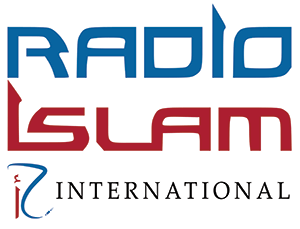Human Face
The human face is the most anterior portion of the human head. It refers to the area that extends from the superior margin of the forehead to the chin, and from one ear to another.
The basic shape of the human face is determined by the underlying facial skeleton (i.e. viscerocranium), the facial muscles and the amount of subcutaneous tissue present.
The face plays an important role in communication and the expression of emotions and mood. In addition, the basic shape and other features of the face provide our external identity.
So far What we have discussed the all the bones of our facial skeleton:
· Two nasal bones (protects the nasal cavity)
· Two maxillae (helps to make up the skull)
· Two inferior nasal conchae (helps to warm, and clean the air that passes through the nose
· Two palatine bones (It provides protection and passage for important nerves and blood vessels.)
· Two Zygomatic Bones (help create facial symmetry.)
· Two Lacrimal Bone (protects the eyeball and associated structures,)
· Mandible Bone (is the largest and strongest bone of the human face.)
· Vomer Bone (plays a role in directing and guiding airflow)
Today what we will be starting a new topic from the Human Face that is our Facial muscles:
What is Facial Muscles?
Facial Muscles is A group of muscles originating mainly from the bones of the skull and inserting onto the skin of the face, which produce facial expressions
The facial muscles, also called craniofacial muscles, are a group of about 20 flat skeletal muscles lying underneath the skin of the face and scalp. Most of them originate from the bones or fibrous structures of the skull and radiate to insert on the skin.
Contrary to the other skeletal muscles they are not surrounded by a fascia (Fascia is a thin connective tissue that surrounds and supports every organ, muscle, bone, nerve fiber,, with the exception of the buccinator muscle. The facial muscles are positioned around facial openings (mouth, eye, nose and ear) or stretch across the skull and neck. Thus, these muscles are categorized into several groups;
· Muscles of the mouth (buccolabial group)
· Muscles of the nose (nasal group)
· Muscles of the cranium and neck
· Muscles of the external ear (auricular group)
· Muscles of the eyelid (orbital group)
The specific location and attachments of the facial muscles enable them to produce movements of the face, such as smiling, grinning and frowning. Thus, these muscles are commonly called muscles of
facial expression, or mimetic muscles. All of the facial muscles are innervated by the facial nerve (CN VII) and vascularized by the facial artery.
Starting with first type of Muscle that is:
Muscles of the mouth
The muscles of the mouth, or buccolabial group of muscles, is a broad group of muscles that form a functional compound that controls the shape and movements of the mouth and lips. There are 11 of these muscles and their functions include:
· Elevating and everting the upper lip: (levator labii superioris, levator labii superioris alaeque nasi, risorius, levator anguli oris, zygomaticus major and zygomaticus minor muscles).
· Depressing and everting the lower lip: (depressor labii inferioris, depressor anguli oris and mentalis muscles.)
· Closing the lips: (orbicularis oris muscle).
· Compressing the cheek: (buccinator muscle).
The majority of the mouth muscles are connected by a fibromuscular hub onto which their fibers insert. This structure is called the modiolus, it is located at the angles of the mouth and it is primarily formed by the buccinator, orbicularis oris, risorius, depressor anguli oris and zygomaticus major muscles.
1st Muscle of the mouth: Orbicularis oris muscle

The orbicularis oris muscle is a circular muscle that surrounds the mouth opening and is commonly referred to as the “kissing muscle” or “muscle of the lips.” Here are some points about the orbicularis oris muscle:
1. Location: The orbicularis oris muscle encircles the mouth, forming the bulk of the lips. It extends from the corners of the mouth and merges with the muscles of the cheeks and chin.
2. Structure: It consists of muscular fibers arranged in concentric circles around the oral orifice. These fibers interdigitate with fibers from adjacent muscles, allowing for precise control of lip movements.
3. Function: The main function of the orbicularis oris muscle is to close and shape the lips. It plays a crucial role in various oral functions, including speaking, eating, drinking, and facial expression. It also helps in maintaining oral continence, preventing food and liquids from escaping the mouth.
4. Speech Articulation: The orbicularis oris muscle contributes to speech articulation by controlling the movements of the lips during the formation of sounds and words. It helps in producing bilabial sounds (sounds formed by bringing both lips together), such as “p,” “b,” and “m.”
5. Facial Expression: The orbicularis oris muscle is involved in various facial expressions, including smiling, puckering, and grimacing. It helps in conveying emotions and expressions through movements of the lips.
6. Innervation: The orbicularis oris muscle is innervated by branches of the facial nerve (cranial nerve VII), specifically the buccal branches. These nerve fibers provide the necessary motor impulses for the contraction of the muscle.
7. Importance in Aesthetics: The size, tone, and symmetry of the orbicularis oris muscle contribute to the overall appearance of the lips and lower face. Well-developed and balanced orbicularis oris muscles are often associated with attractive and youthful facial features.
Overall, the orbicularis oris muscle is a crucial structure in the oral region, playing a vital role in various oral functions, speech articulation, facial expressions, and facial aesthetics.





0 Comments